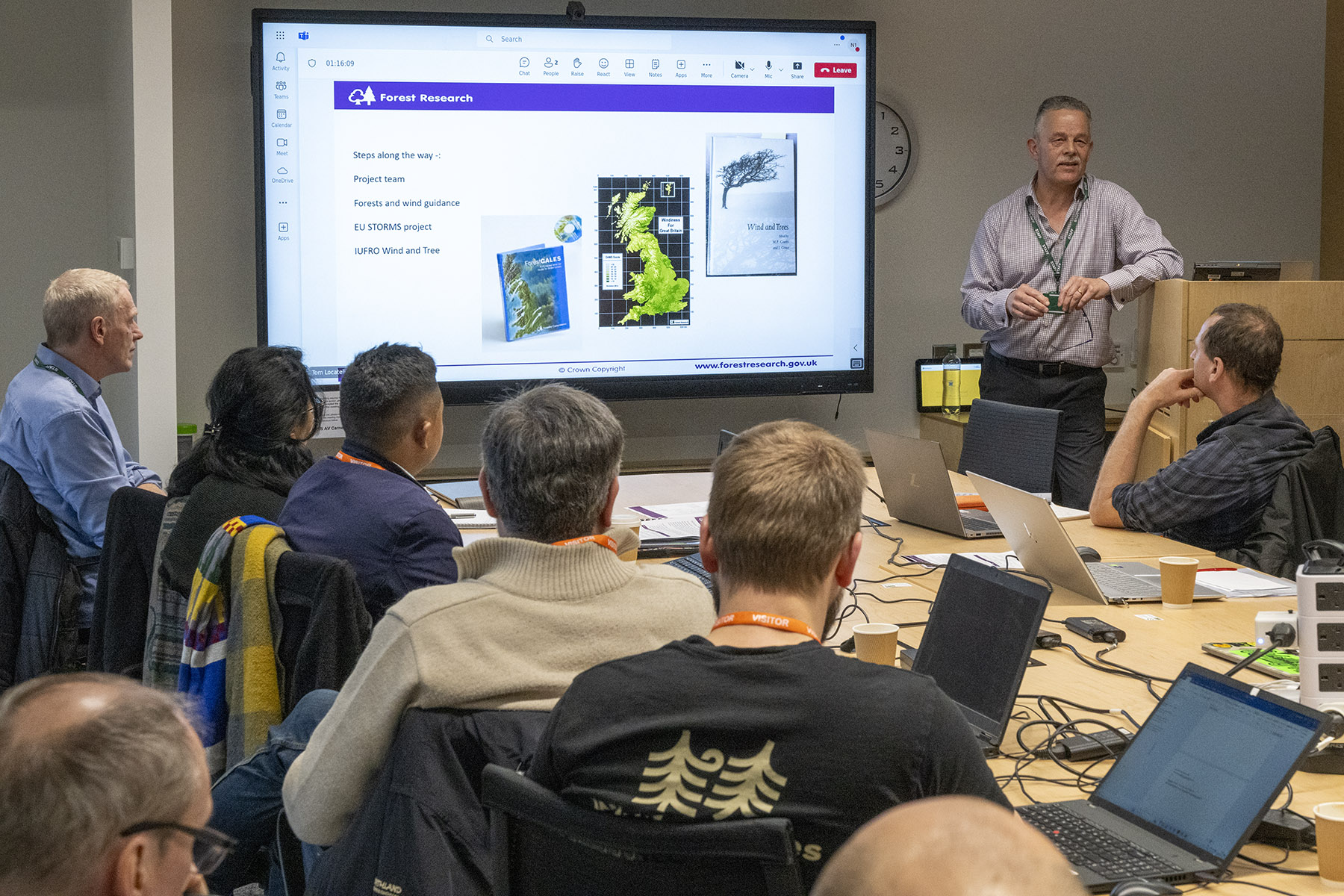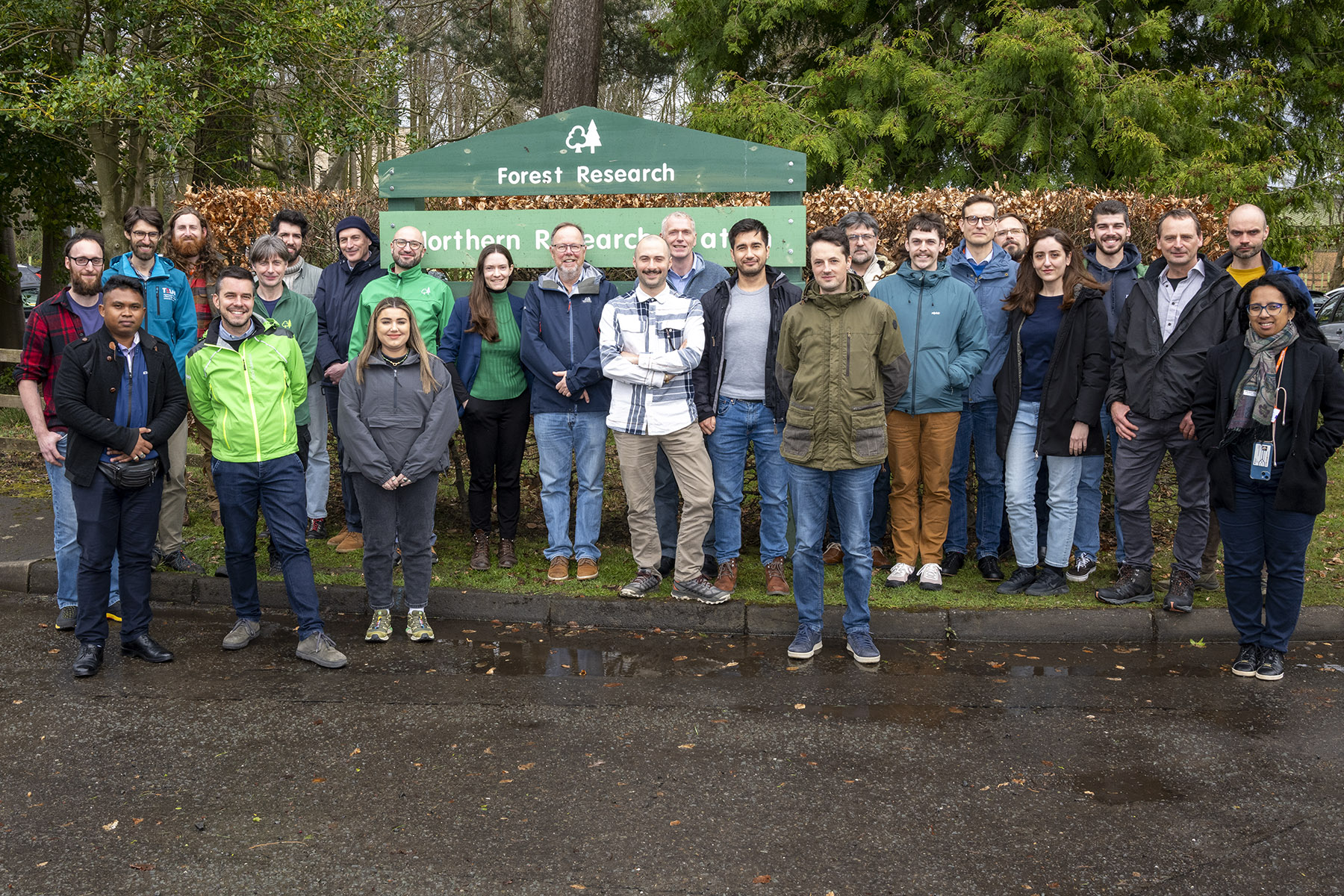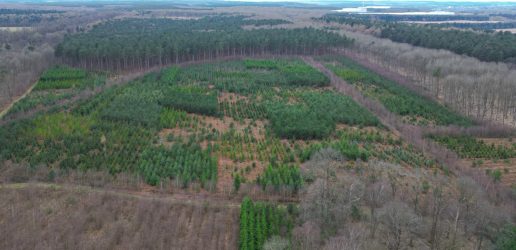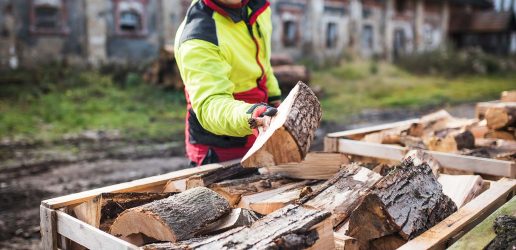Between 9 and 11 April 2024, Forest Research hosted an international conference and workshop in association with the International Union of Forest Research Organisations (IUFRO) on wind risk and Forest Research’s ForestGALES/fgr wind risk model.
Around 30 participants from across the UK, various European countries, and from further afield, took part. The majority were scientists and researchers, but also included practitioners and a representative from the UK private forestry sector.

The event was organised and hosted by Forest Research senior scientist, Tom Locatelli, in his dual roles as leader of Forest Research’s Wind Risk in a Changing Climate Project, and as the deputy coordinator of the IUFRO 8.03.06 Working Unit: Impact of Wind on Forests.
The event featured a mix of presentations from Forest Research and European wind risk experts, and practical, hands-on tutorials on typical applications of ForestGALES/fgr with a range of data sources. These included airborne LiDAR, with examples both within the R platform, aimed primarily at researchers, and the popular free and open-source QGIS GIS software, aimed primarily at practitioners.
The event also included a field visit at Queen Elizabeth Forest Park (QEFP) to discuss stability and modelling challenges for continuous cover forestry (CCF) silviculture. John Hair, Forestry and Land Scotland planner for QEFP, gave participants a tour of several CCF exemplar stands located in Achray forest. These showed both opportunities and challenges of implementing these silvicultural practices, and the associated changes in vulnerability to wind that trees in CCF stands are exposed to during their lifetime.
The visit was followed by a round-table discussion on the challenges and opportunities for the wind risk modelling community of supporting a transition to stands of complex structure and multiple species composition.

After the event, Tom Locatelli said:
“This has been a very successful gathering. Feedback from the participants suggests we’ve achieved our aims: we showcased the power and flexibility of the ForestGALES/fgr wind risk model; we initiated productive exchanges between delegates and strengthened collaborations between the FR wind risk team and several scientists and researchers at universities in the UK and abroad”.
“Most importantly, the event confirmed Forest Research’s role as the leading provider of wind risk science, models and decision support tools in the UK and Europe.”
Find out more about ForestGALES/fgr wind risk model.
Recent News
View All news
Seventeen coniferous tree species show early promise for future commercial timber production in the UK
Researchers have set up a network of nine large scale experiments across the UK to test the suitability of 17 tree species as potential alternatives for future commercial timber production.
Forest Research are looking for people involved in the harvesting, processing, transport, import, or trade of firewood in Scotland to complete an important survey.

New guide to help local authorities conduct a people survey on the social value of their treescapes
A new step-by-step guide to help local authorities, charities and civic societies carry out a people survey to understand social and cultural values related to trees in their area, is now available.

Seventeen coniferous tree species show early promise for future commercial timber production in the UK
Researchers have set up a network of nine large scale experiments across the UK to test the suitability of 17 tree species as potential alternatives for future commercial timber production.
Forest Research are looking for people involved in the harvesting, processing, transport, import, or trade of firewood in Scotland to complete an important survey.

New guide to help local authorities conduct a people survey on the social value of their treescapes
A new step-by-step guide to help local authorities, charities and civic societies carry out a people survey to understand social and cultural values related to trees in their area, is now available.

